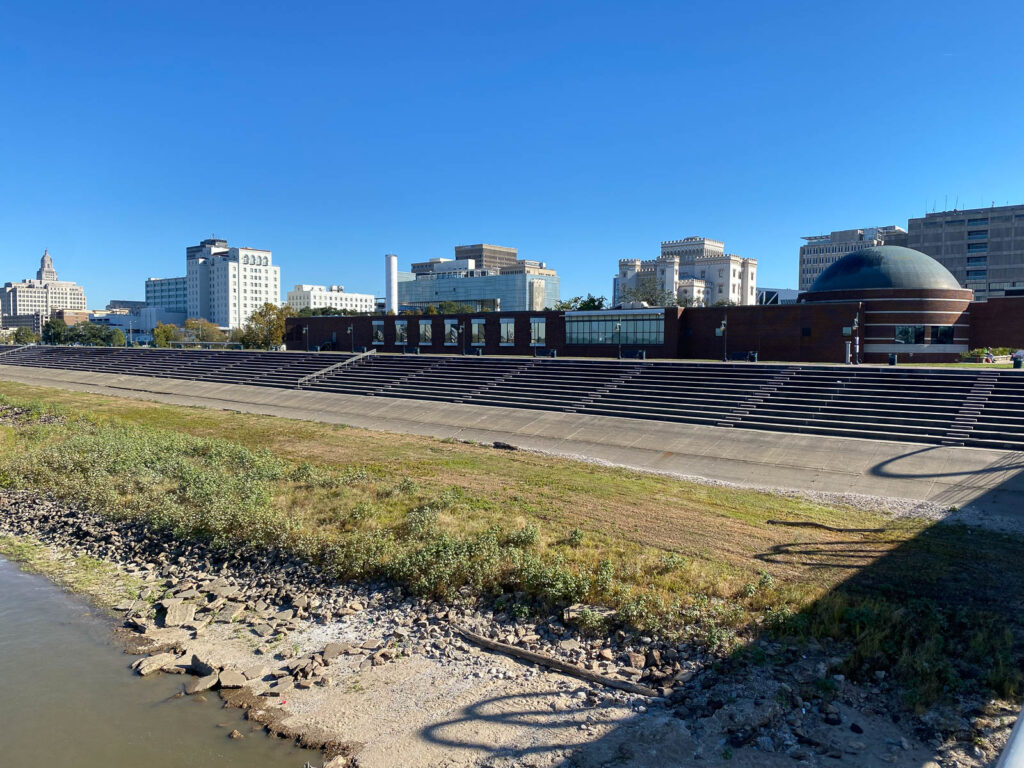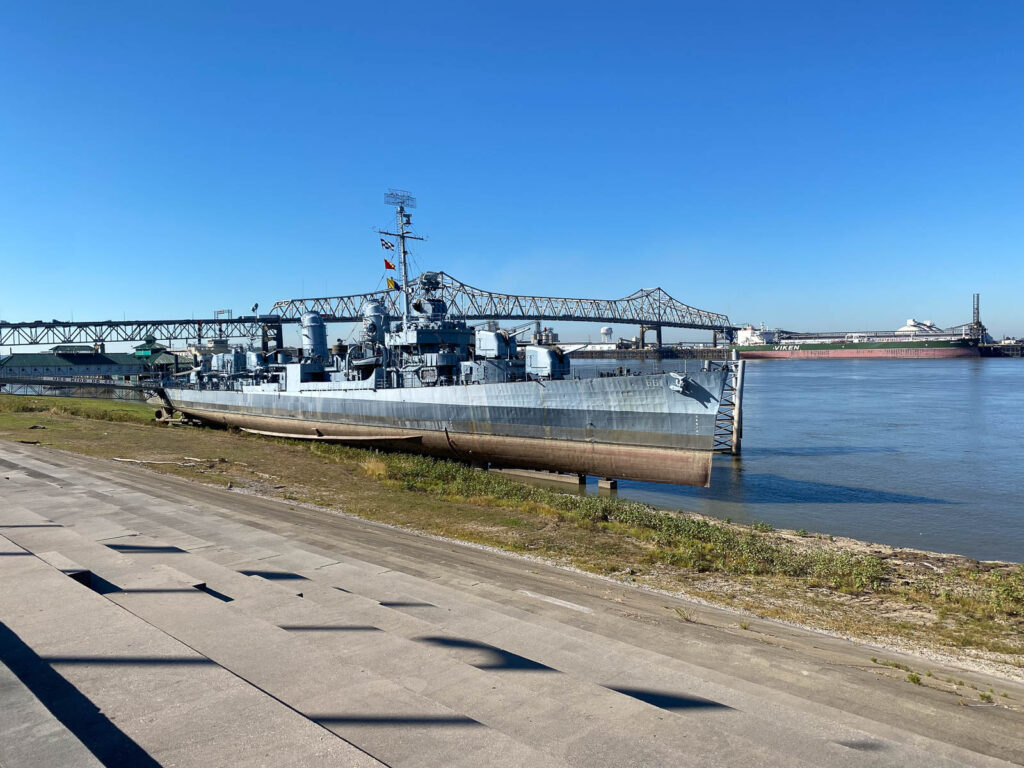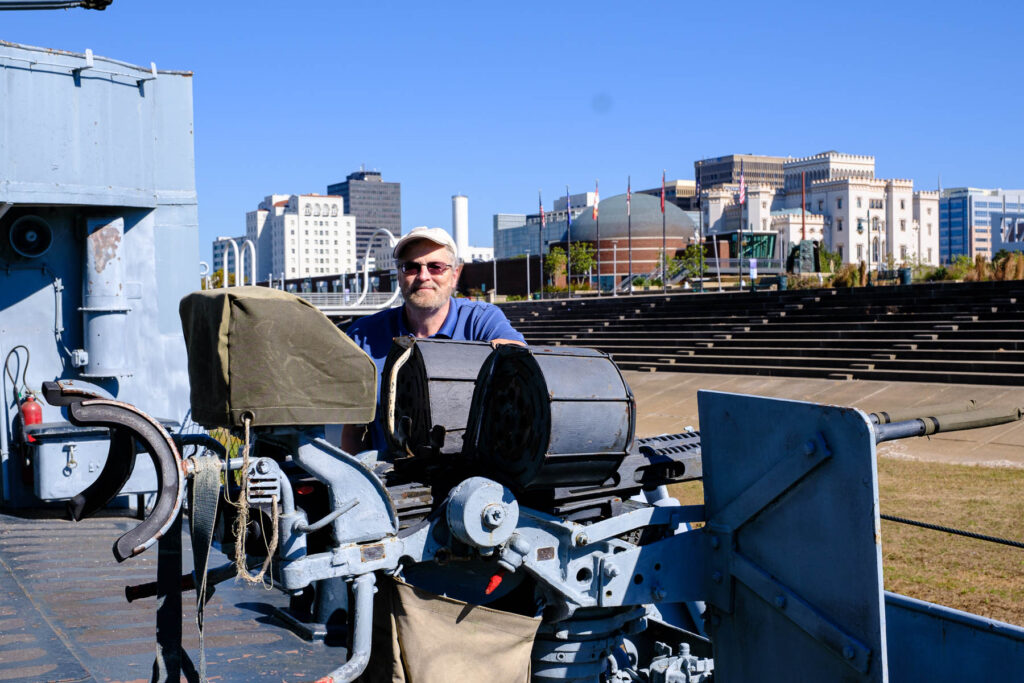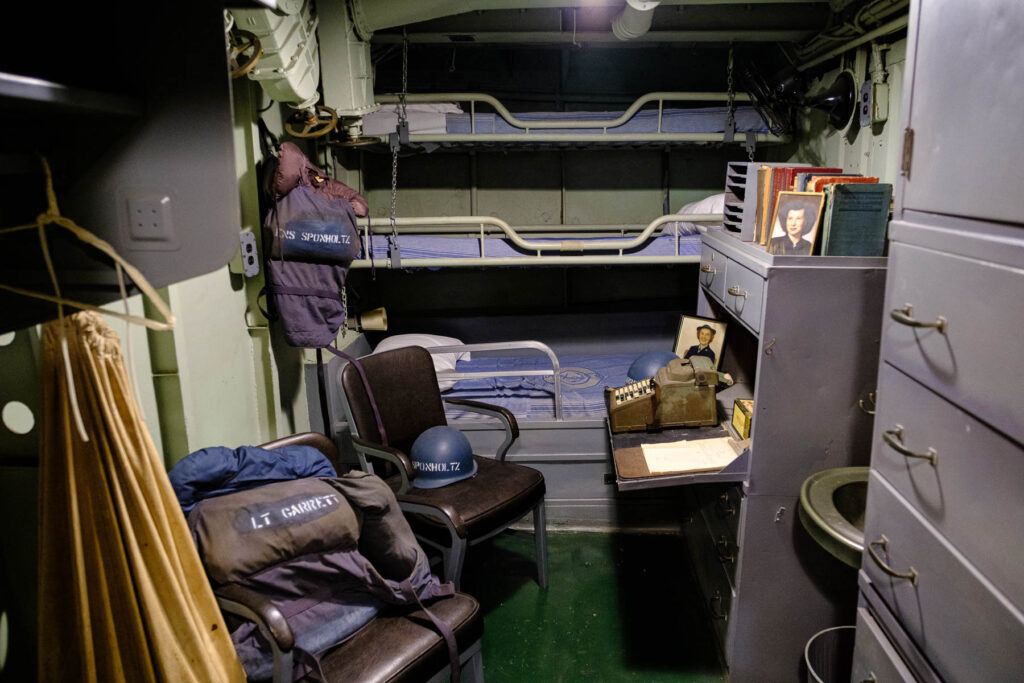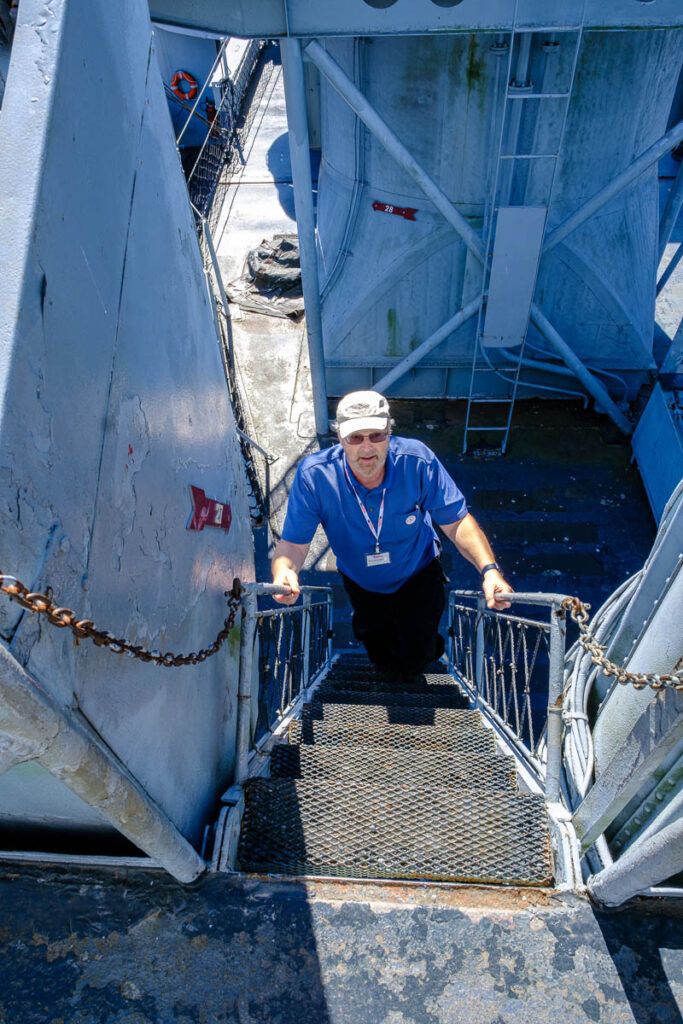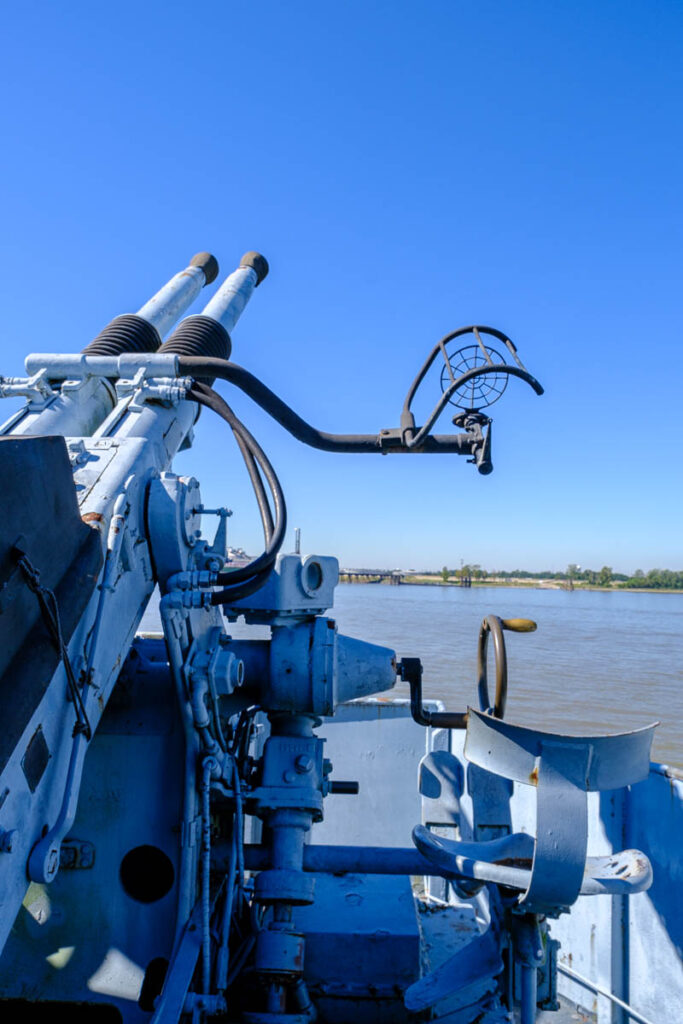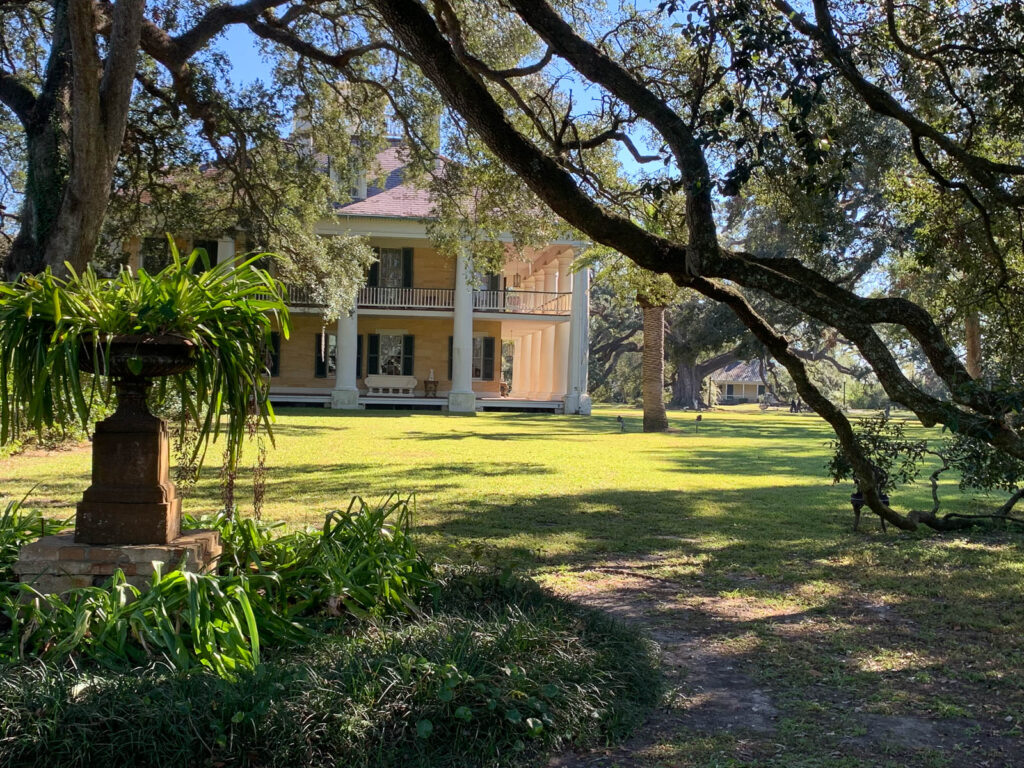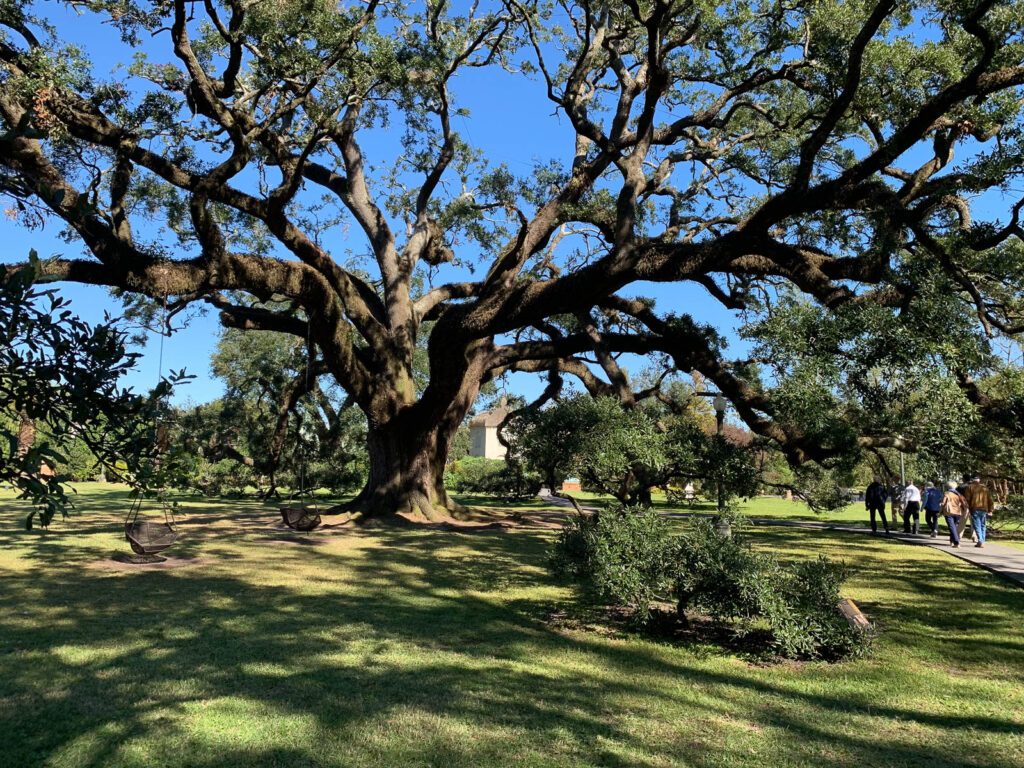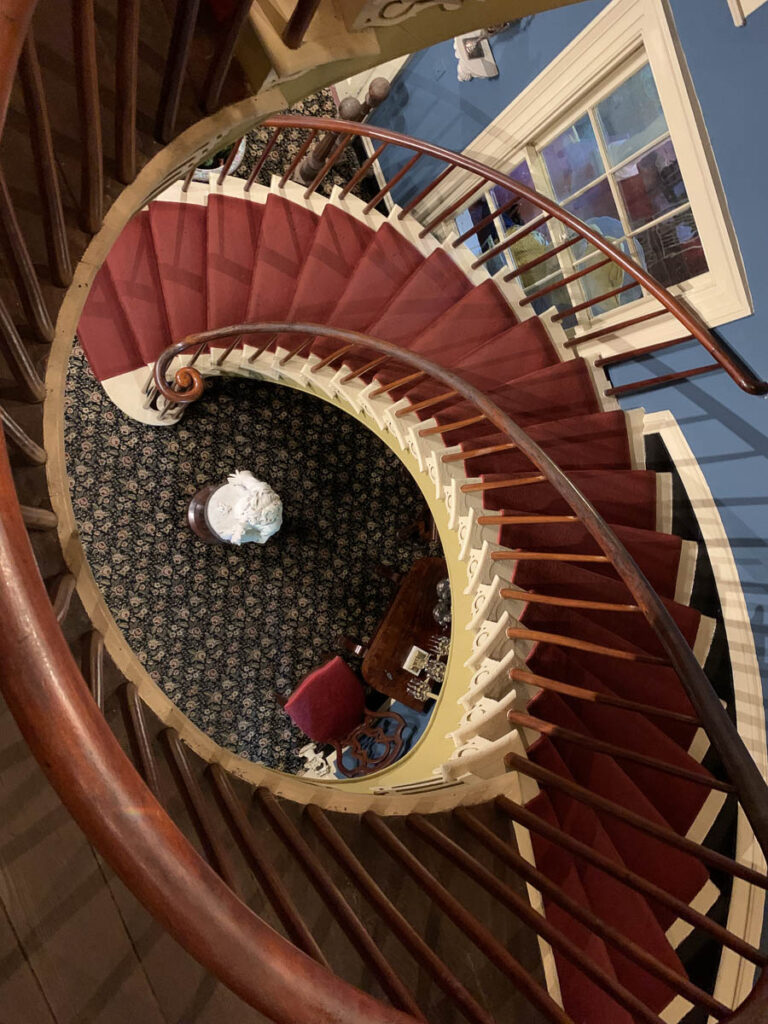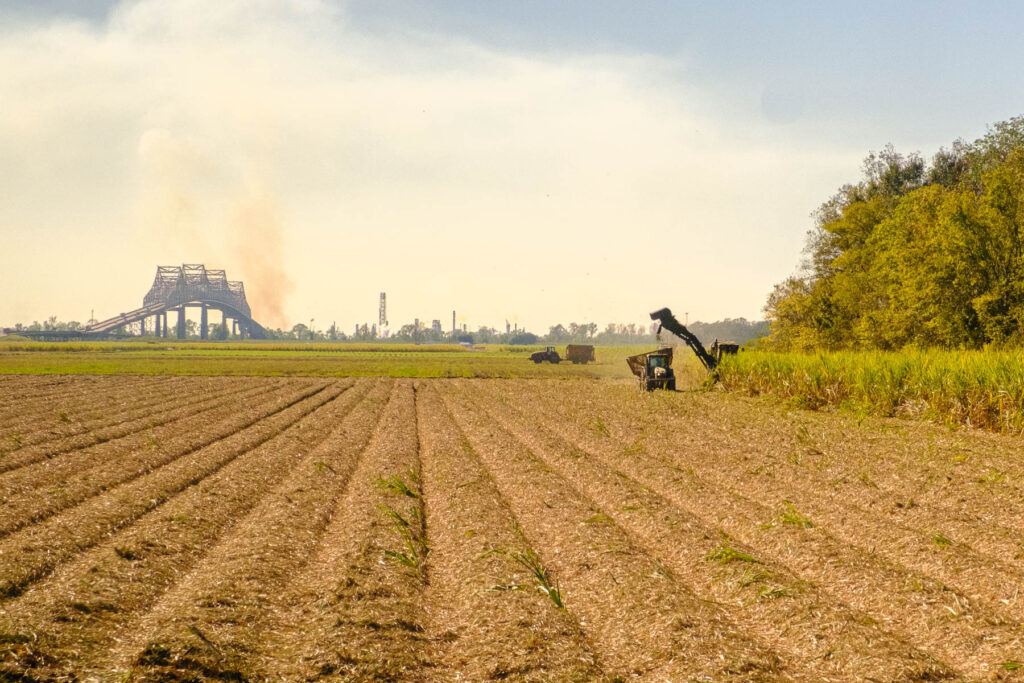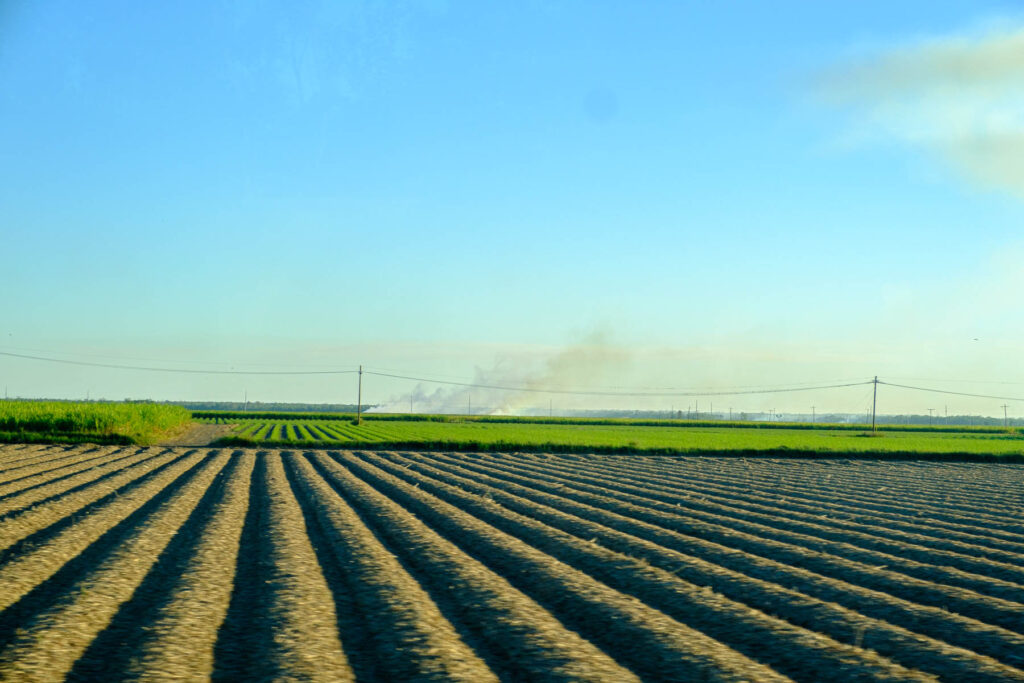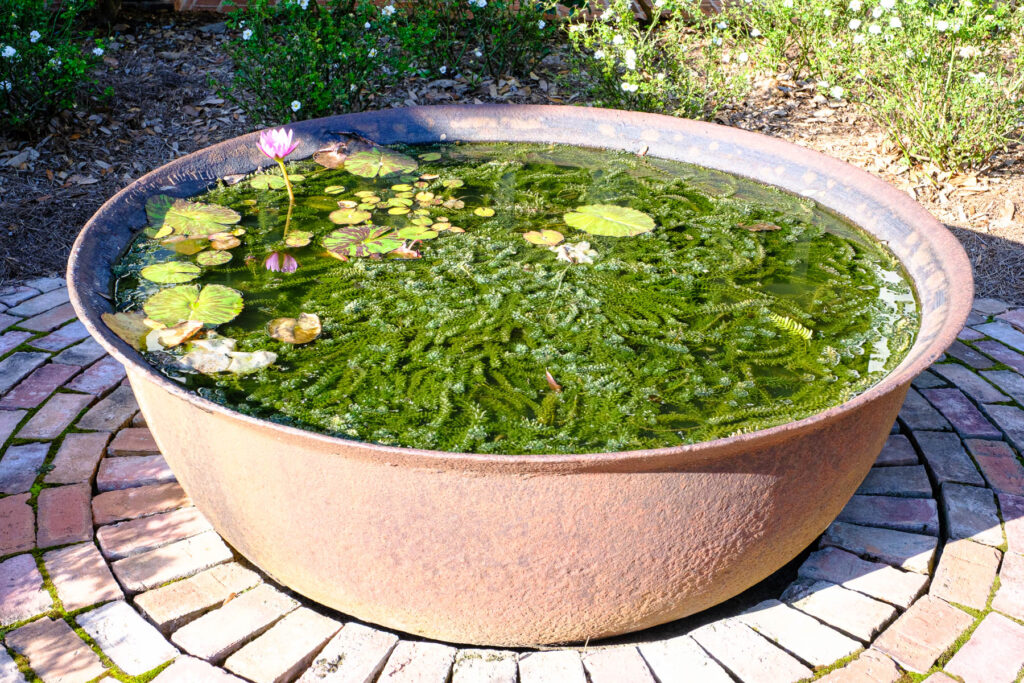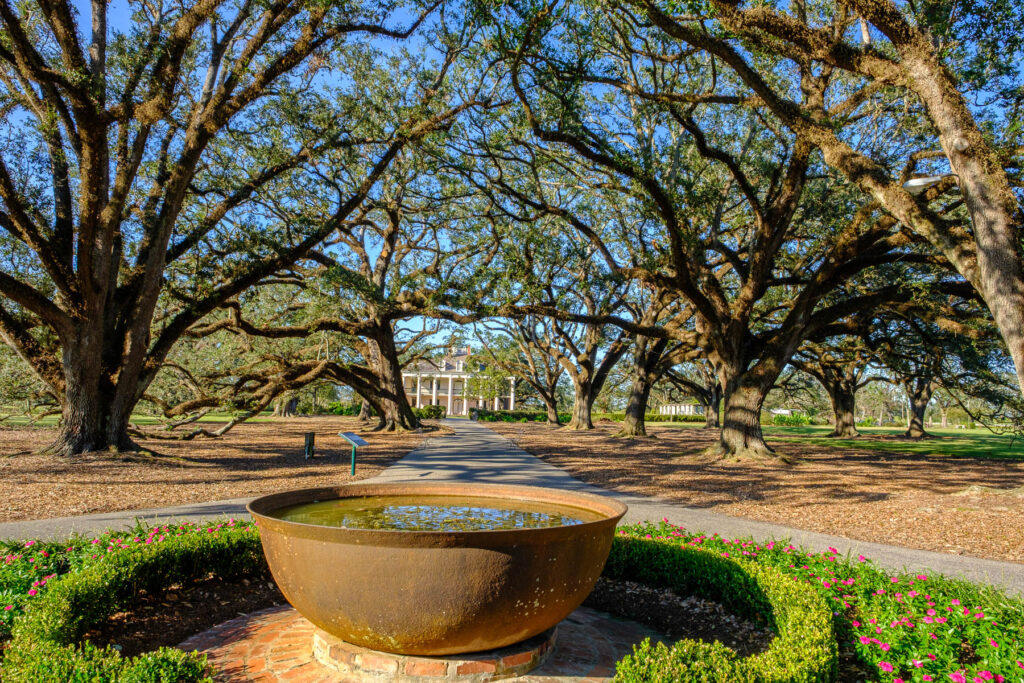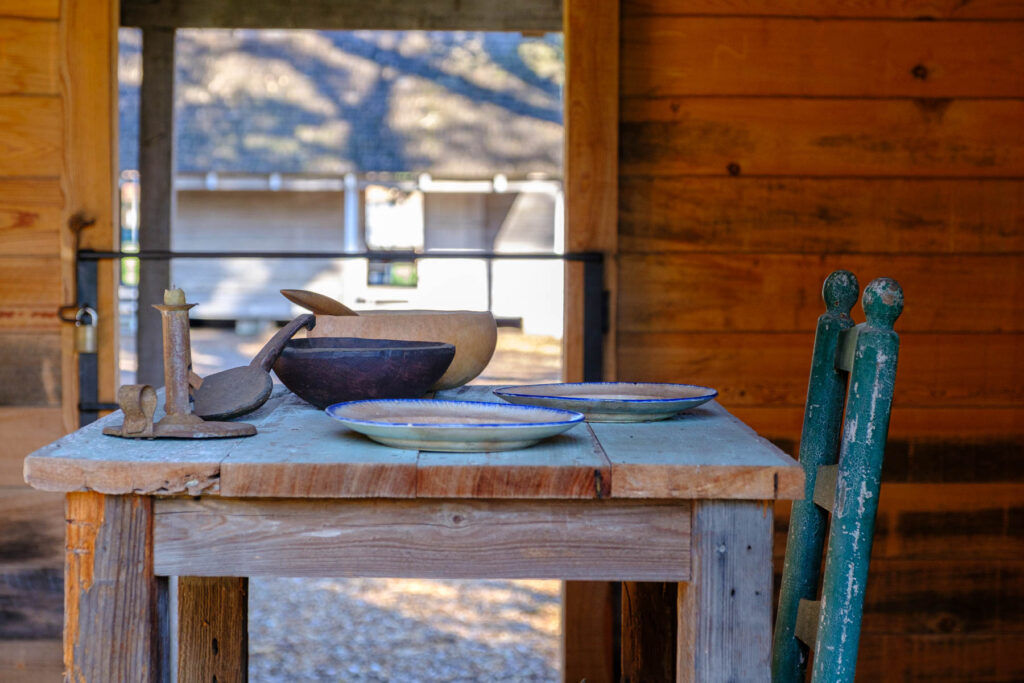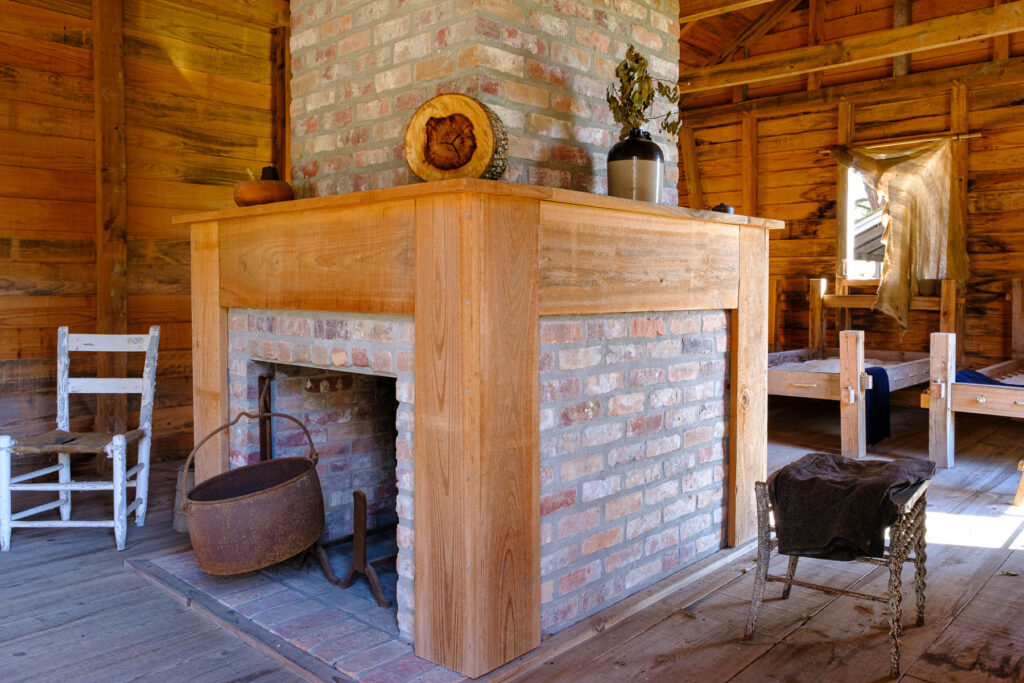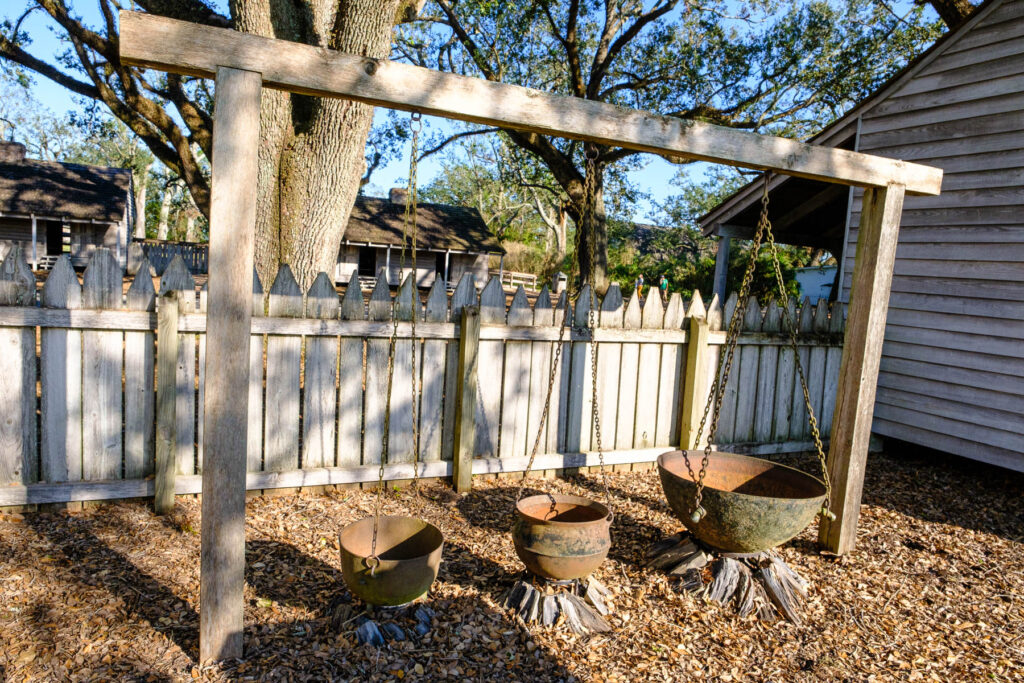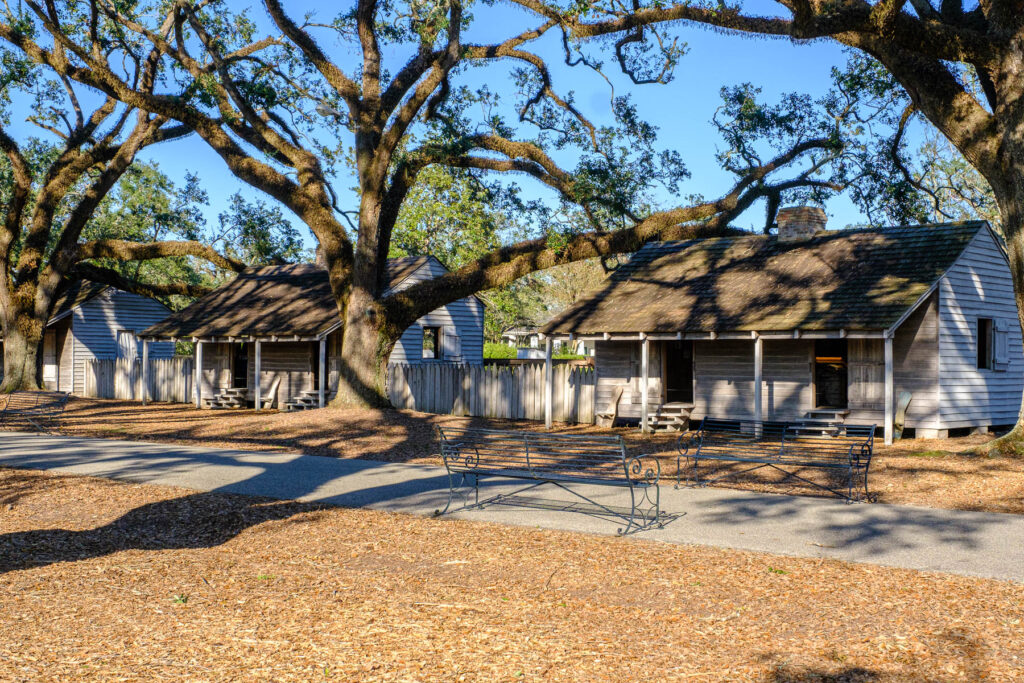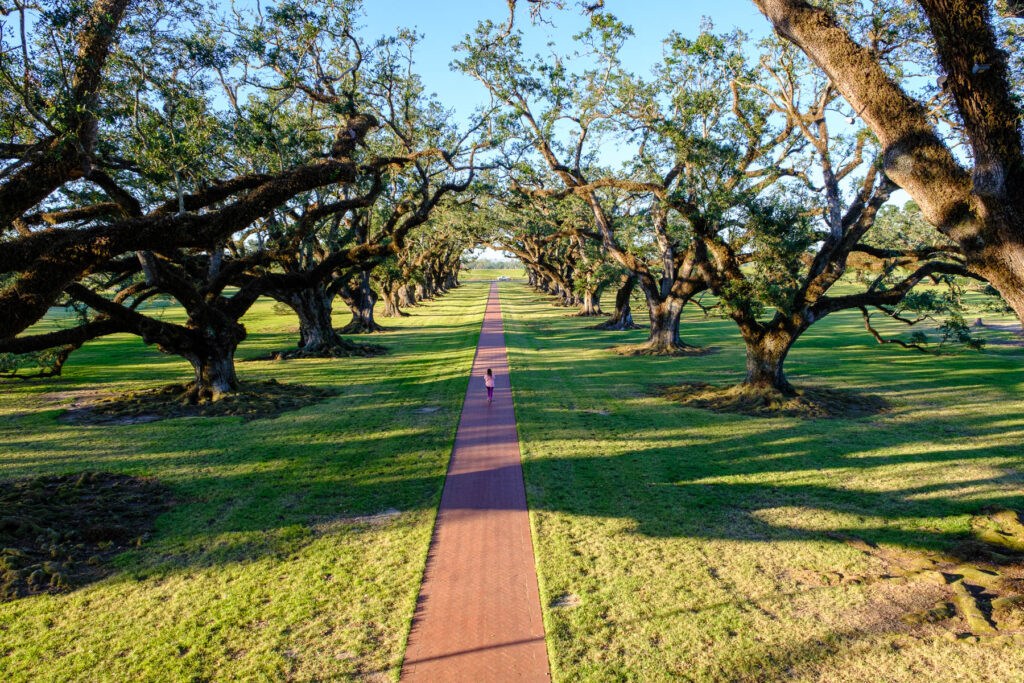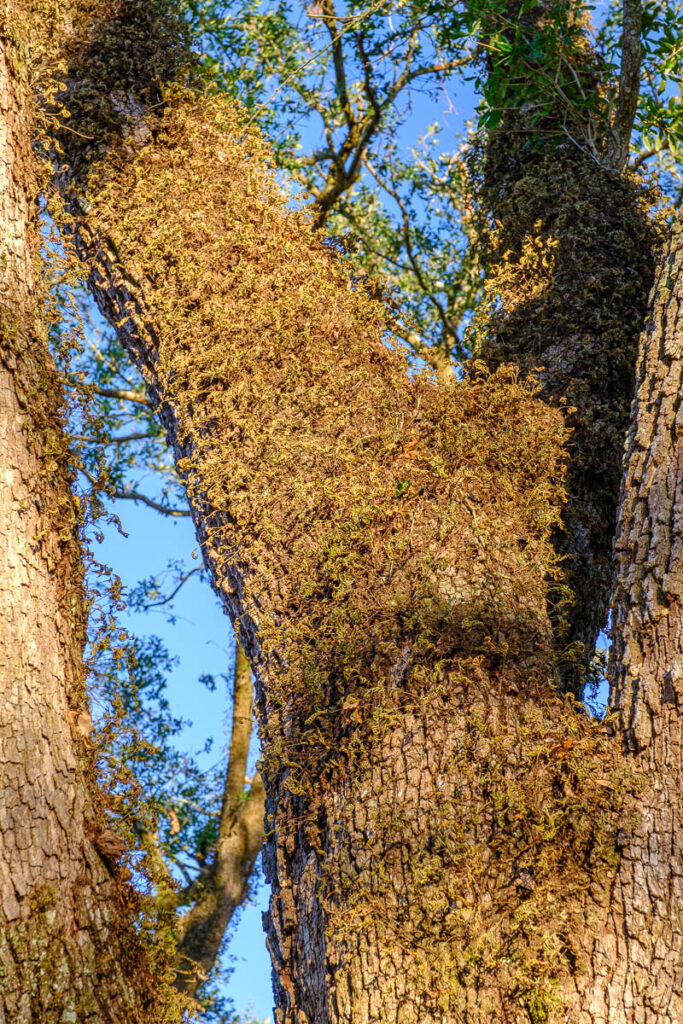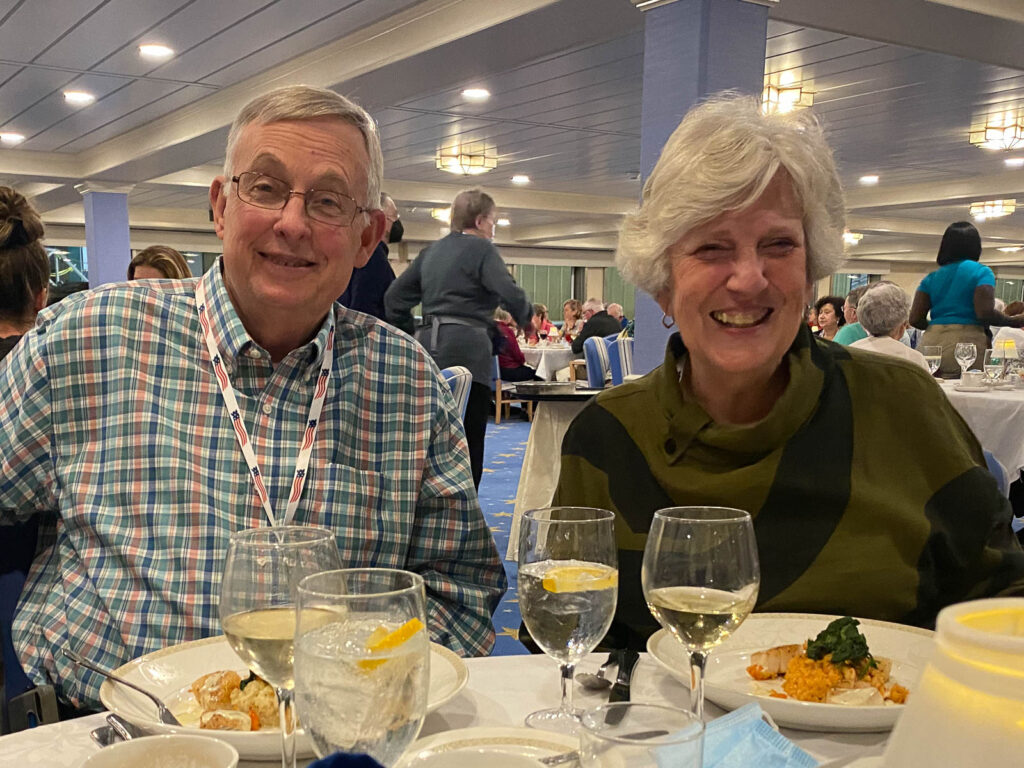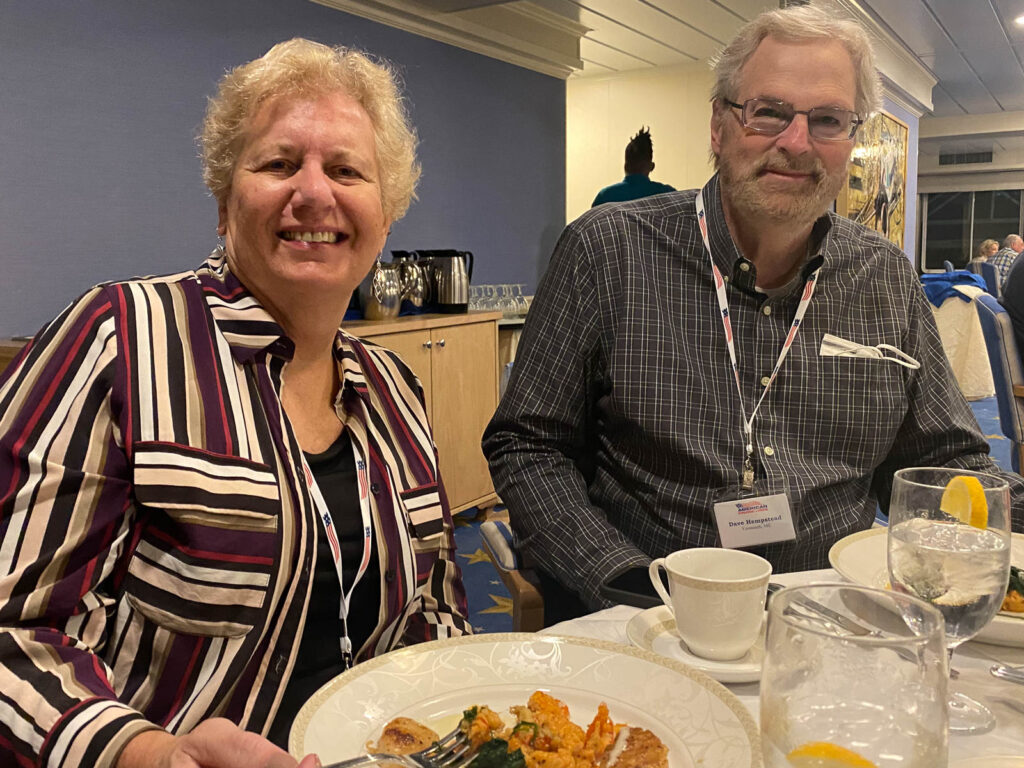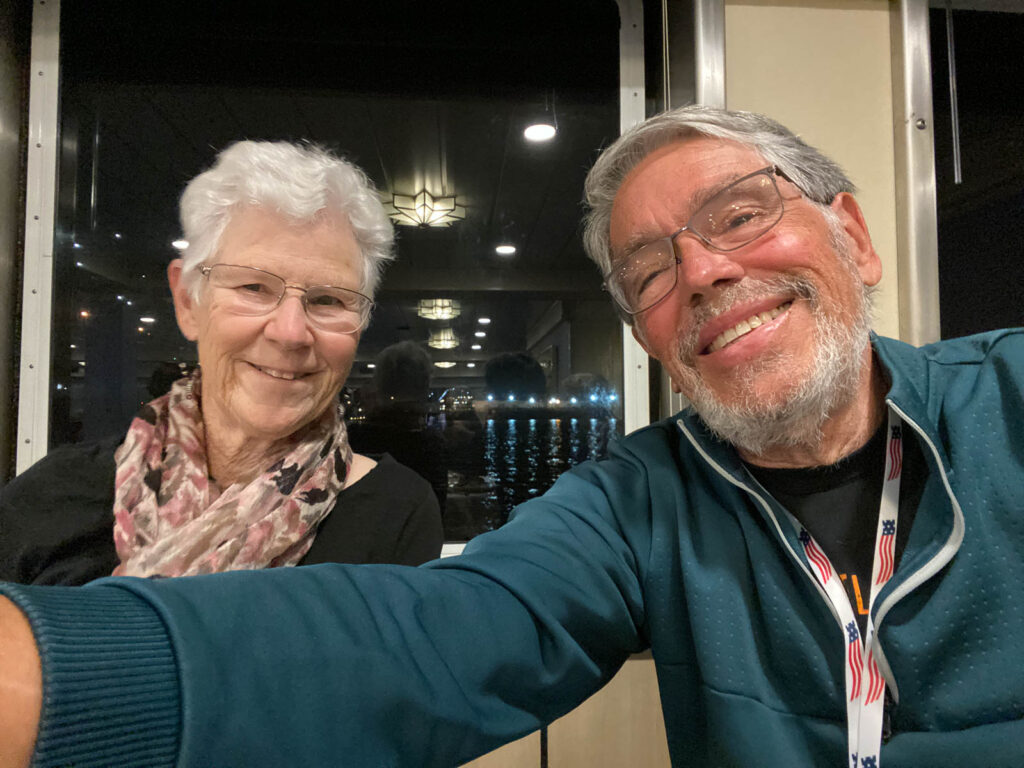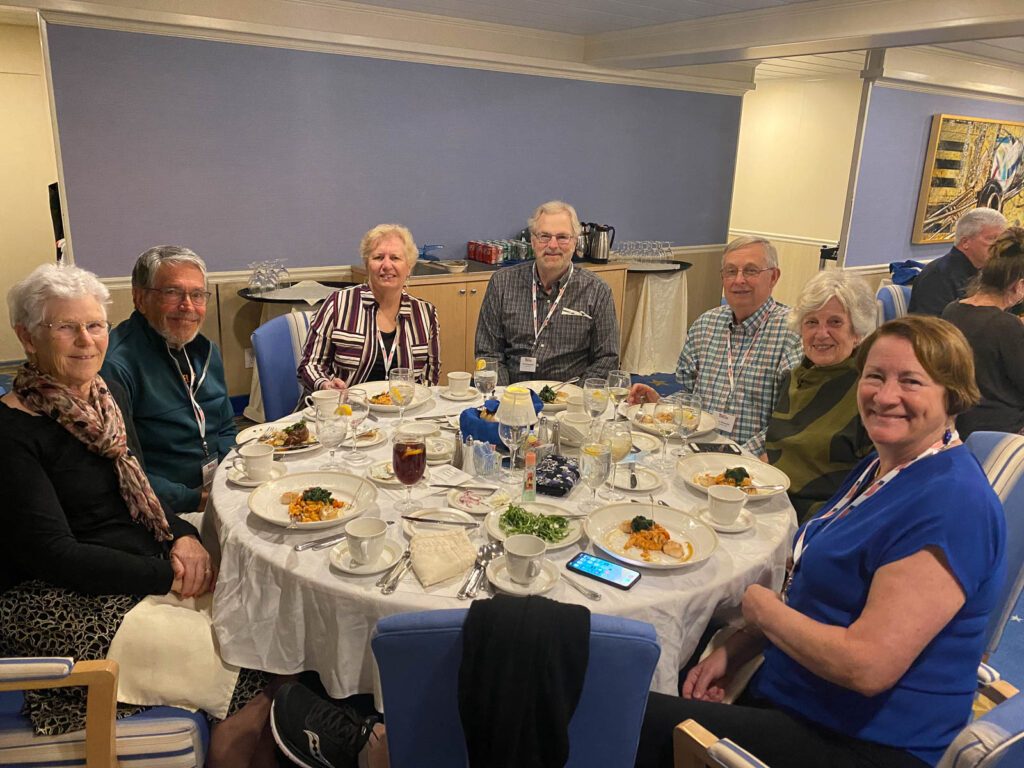Today we divided and conquered. Dave, Ro and I went walking down the levee to the USS Kidd while the others visited the Houmas House Plantation. In the afternoon Judy, Carolyn, Steve, Sharon and I went to the Oak Alley plantation. Dave and Roland relaxed aboard ship. It was a beautiful, sunny day hitting a high of 75 – perfect for outside activities.
The plantations are half-way back to New Orleans – an hour’s drive each way from our berth in Baton Rouge. Both were built using two key assets: sugar cane and slavery. The homes are very fine examples of antebellum architecture and furnishings, and the grounds include formal gardens and ponds. Both feature majestic 300-year-old live oak alleys leading to the houses.
The tour at Oak Alley, in particular, focused on the role of slavery in the antebellum period of roughly 1830 through the Civil War. Tulane University built slave quarters on their original sites at Oak Alley and equipped them with period fixtures. Informative signs told the stories of slaves, giving their names, family situations and plantation duties. The information is presented in a matter-of-fact way without passing moral judgement. It isn’t a great leap, however, for us to appreciate what a terrible, dehumanizing practice slavery was.
Our tour guide on the bus to and from Oak Alley, Harry, was quite a character. He’s worked in the oil industry and delt in antiques and rides on Mardi Gras floats, throwing swimming noodles to the kids rather than beads.
He told us a lot about the sugar business too. Originally, sugar cane was grown to produce rum, which of course played a significant role in the slavery trade. When the refining process was invented sugar became a sweetener. It’s considered a high-risk/high-reward business – lots of ways the crop can fail but big rewards when the crop succeeds. Slave labor was the engine behind the industry in the antebellum period. The life expectancy of a sugar field worker was six to eight years. If the sharp edges of the cane stalks didn’t get you the bugs and snakes in the fields did.
On and on he went, including stories about his mom, dad and stepdad. (Mom promised his stepdad she’d bury him at sea. When he died she flushed his ashes down the toilet. “He’ll get to the ocean eventually,” she decided)
To get to the USS Kidd required walking up a ramp to the top of the levee – a good thirty or more feet up. Dave hitched a ride in a golf cart to save his back. From there it was a level walk of a quarter mile or so to the USS Kidd Museum and the ship, following a very nice bike and hiking trail.
The ship, a Fletcher-class destroyer, is named after Rear Admiral Kidd who went down with the USS Arizona at Pearl Harbor. It was built in 1942 and served in WWII and Korea. It was hit by a kamikaze at Okinawa in 1945 with the loss of 38 lives.
The overriding impression I had from touring the ship was the incredibly tight quarters in which the men – typically 16 to 24 years of age – lived. Every inch of space was utilized. Sleeping quarters consisted of a sea of cots hung three high with virtually no space between them. The bathroom facilities – the “head” – made the Onawa Halfway House two holer look like the epitome of privacy.
The young lady taking tickets at the ship graduated last May from LSU with a degree in history. She’d like to become an attorney and become a military JAG officer. She needs to convince her dad, who’s all over her case to get a real job – that she should take the LSAT a third time to make the cut for law school. A nice gal who I hope finds a way to fulfill her dreams.
This evening a Cajun band, a man and woman playing accordion, violin and guitar, entertained us with Cajun and country and western music. They sang the Cajun tunes in French. Judy and I were struck by the similarity of their music with music we’ve heard in Nova Scotia. That’s not surprising, I suppose, since Cajuns (Acadians) left Nova Scotia to escape the British in the late 18th century and ended up in Louisiana.
Please don’t worry about us: we’re all healthy and taking nourishment, maybe more nourishment that we ought but we’re all having a great time nonetheless.


